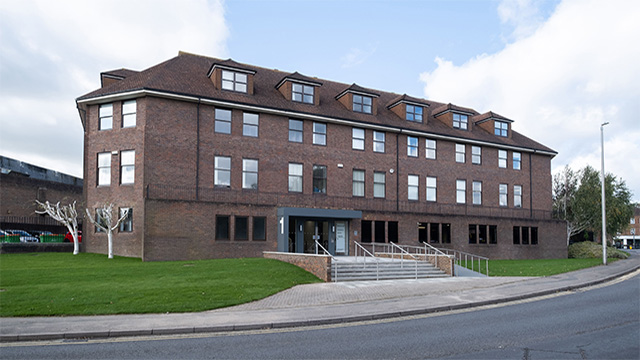ESG skills gap: Maintaining our heritage
Mike Coleman talks about his classic car in the way that many an enthusiast does – in a slightly self-deprecating manner that nonetheless can’t hide their passion. “For my sins I own a 1969 MGB GT,” Coleman says. “It’s a money pit.”
A money pit – and a metaphor for problems he sees in the day job. Coleman is director of operations at construction group Sir Robert McAlpine’s special projects division.
Much of his time is spent tackling tricky questions around how to work with heritage buildings and improve their sustainability performance without losing their sense of history or identity. The issue is that with the buildings – as with his car – the know-how of how to work with such assets is disappearing.
Mike Coleman talks about his classic car in the way that many an enthusiast does – in a slightly self-deprecating manner that nonetheless can’t hide their passion. “For my sins I own a 1969 MGB GT,” Coleman says. “It’s a money pit.”
A money pit – and a metaphor for problems he sees in the day job. Coleman is director of operations at construction group Sir Robert McAlpine’s special projects division.
Much of his time is spent tackling tricky questions around how to work with heritage buildings and improve their sustainability performance without losing their sense of history or identity. The issue is that with the buildings – as with his car – the know-how of how to work with such assets is disappearing.
“The heritage skills gap doesn’t just apply in construction,” he says. “The people that work on my car are all in their 60s. They cannot get apprentices into the motor trade.”
Coleman spoke at a closed roundtable held by flexible office operator Argyll, attended by EG. Argyll owns or operates 30 buildings across central London, many of them heritage assets, and has been on a wide-ranging programme of refurbishing and retrofitting.
The company has spent some £25m on seven buildings so far, including its offices at 84 Brook Street in Mayfair, W1, where it has lifted the EPC rating to B from E.
Lack of training
For Argyll chief executive John Drover, such buildings have felt unloved for too long. And that can mean the debate around improving their green credentials brings in too few voices.
“Heritage buildings are slightly overlooked in the wider scheme,” he says. “People like to talk about redevelopments, new builds and large schemes. Heritage buildings aren’t [seen as] quite as exciting sometimes, which I disagree with.
“It’s all about how we futureproof these buildings as well as how we go, here [on Brook Street], from a historic building that was heated by a coal fireplace to gas-fired central heating and now into a new era of low-carbon efficiency for heating and low energy lighting as well.”
Drover adds: “How do we retain heritage while at the same time modernising these buildings? At what point do you chuck the baby out with the bathwater by improving them? Heritage, to me, it’s about the evolving history of this country and the streets we see around us.”
There is always an answer, the chief executive says. “We all hear about stranded assets which would have no value and would have to be torn down. But I think for almost every building there is a solution that could take those buildings to a better efficiency rating if there was a will to do it.”
A will, but also the knack and know-how – including with local authorities signing off on developers’ and asset owners’ plans, notes Dom Gabriele, director of capital projects at the Crown Estate.
“I think it’s fair to say that there is a lack of technical understanding and understanding of the technical value of a building when consents are considered,” he says. “Heritage value is always front and forward in conversation. But it also needs to be aligned with the technical performance of the building and the energy performance must be factored in. They all need to be considered to ensure that they will align, as opposed to one working against the other.”
But the biggest skill gap remains in the industry and – as with Coleman’s car – getting a new generation enthused about improving classic assets is proving problematic. As with so many parts of the built environment, the situation would benefit from more collaboration.
“There’s a lot of work ongoing at the moment with regards to what training schemes could look like,” Gabriele adds. “We’re working with Grosvenor with a little collaboration on how that could look. We’re working with the Construction Industry Training Board and a few of their specialists as well to understand where the gaps are, to see how we could help and how we could contribute. But it would take some leaders within the industry to trigger that in order for it to gain some momentum.”
Blank canvas
It’s a start, but perhaps not enough, argues Coleman. “The only time the industry seems to work as an entity is in adversity,” he says. “As soon as you go into something that is a positive, it’s all parochial. We’re all doing our own little thing around skills.”
He adds: “[One problem is] a lack of leadership from government to define what success is, and an expectation that everything filters down from the likes of the Crown Estate, from Grosvenor, from Portman. [They] are seen as the benchmark parties.
“The first time I heard this described was by the health and safety executive of around 10 years ago, who made it clear that they focused on the major contractors, in the hope that the standards we set filtered down to people building the local houses around St Albans or south London or wherever. In practice that sort of downward filtration is not going to happen.”
For the Crown Estate’s Gabriele, it’s now time to embrace the challenge as an opportunity.
“Between May 2019 and July 2022, £3.3bn of the Apprenticeship Levy was left unspent with the Treasury,” Gabriele says. “That’s almost criminal. We’ve got such an opportunity whereby we’ve got this huge gap requiring specialist resource – assessors, coordinators, designers, evaluators – and we really should hone in on that requirement and explore opportunities to work with and collaborate with each other to ensure that apprenticeships and training schemes are available in those specialist areas.
“It’s almost a blank canvas for us to craft and shape how that landscape could look, as far as training is concerned.”
To send feedback, e-mail tim.burke@eg.co.uk or tweet @_tim_burke or @EGPropertyNews
Photo © Sue Thatcher/Shutterstock











